Homemade vinegar (or red wine vinegar) infused with a double-dose of black cap raspberries or whatever berries you have. It's raspberry vinegar on steroids, inspired by a recipe from a legendary English chef duo.
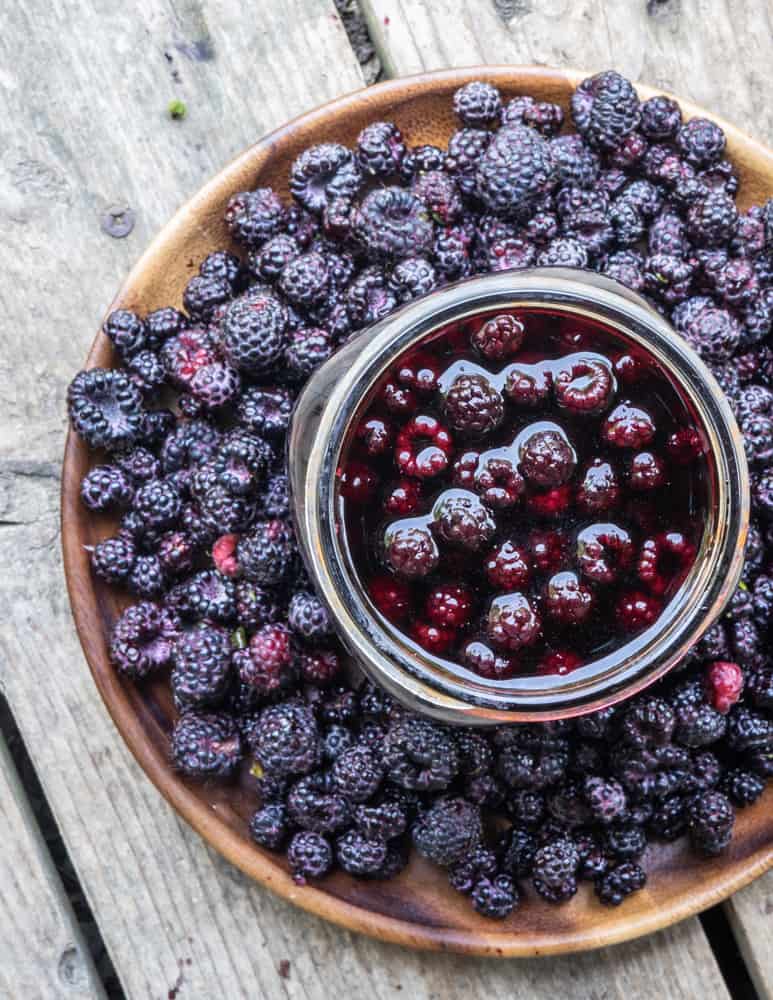
Growing up in the restaurant industry in the Early 2000's, I was witness to some of the great culinary cliches of our time, many of them born in the 1990's from what I can gather.
Honestly, there's too many to count, and I'm guilty of a few myself, like stacking food a la Alfred Portale. I remember one night I decided to do a main course that involved a whole bone-in chicken breast perched on top of a polenta cake, arriving to the diner like some kind of poultry flying saucer. The front of the house manager was, not impressed.
There's lots of funny 90's and 2000's food cliches: played-out style errors like balsamic reduction "Christmas Trees" on everything from cheesecake to caprese salad, dried parsley sprinkled on the rims of plates, mango salsa, and molded food, to name a few.
Most of those I think are a little funny now, some (mango salsa) even good from time to time if I have a craving (and a very ripe mango). But one of the food fails stands above them all to me: raspberry vinaigrette, or raz vin as it's known in line cook speak.
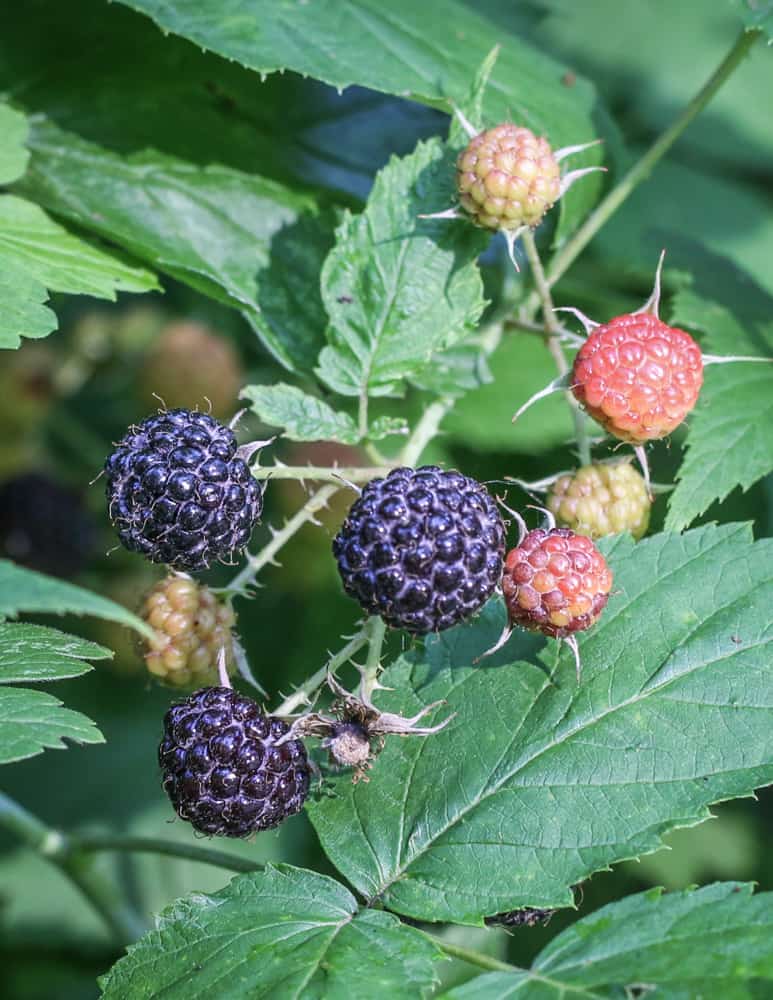
Raspberry vinaigrette was one of the most popular salad dressings I can remember, and I used my fair share of it. I remember one salad made with romaine that got a sprinkle of pre-crumbled feta cheese on it, another with candied walnuts.
Whatever the dance partners on the plate were, there was always something a little unsettling about the raspberry dressing that married them.
The raz vin of my early 20's came pre-prepared from Sysco (the commodity food giant) in opaque, 1 gallon plastic tubs. Unscrewing the lid and peeling off the freshness seal (always a satisfying experience) revealed an off-pink, curiously thick, flesh-colored goop that, after mixing with your quintuple-washed spring mix, was more likely to make the salad arrive at the table looking like a clump of wet hair than food.
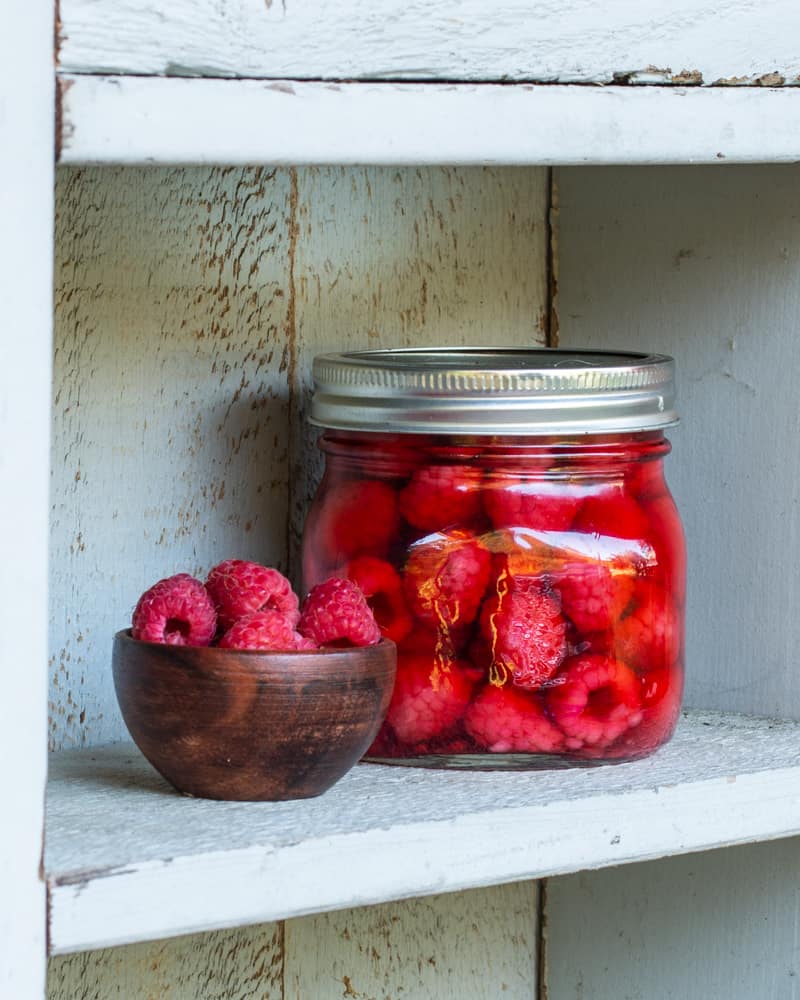
Here's the thing though. Raspberry vinaigrette, and dressings made with many similar berries, especially the wild blackcap or black raspberries pictured here, used to be very good, and I mean toe-curling good.
But, over time, they, like plenty of other good things, got modified and streamlined. The sin of the flesh-colored raspberry goop was burned into my mind, but while I was researching fun uses I could apply to wild berries while writing the fruit chapter of my book, I took a look at a few of the old French classics for inspiration and saw something I liked.
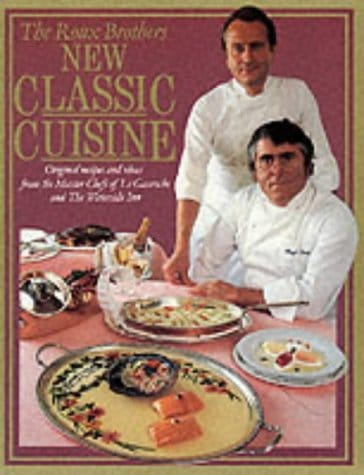
I worked for a chef who was a Maitre'D at La Gavroche, and while reading the book "New Classic Cuisine" by Michel and Albert Roux, the famed 3-star Michelin Chefs who ran the restaurant, known for their contributions to nouvelle cuisine and stats like serving the worlds most expensive meal ($20,945 for a meal for three, mostly wine) I had an epiphany.

Flipping through the book to the fruit section and scanning the pages, I saw a recipe for raspberry vinegar. I remember reading it for fun (enjoying the nostalgia of working my first pantry station).
Something was different though, this raspberry vinegar sounded really good, and just reading the recipe I could tell it was nothing like the stuff I used to dress salads with. As is so often the case with food, the modern, commercialized version bears no resemblance to the original taste it was meant to imitate.
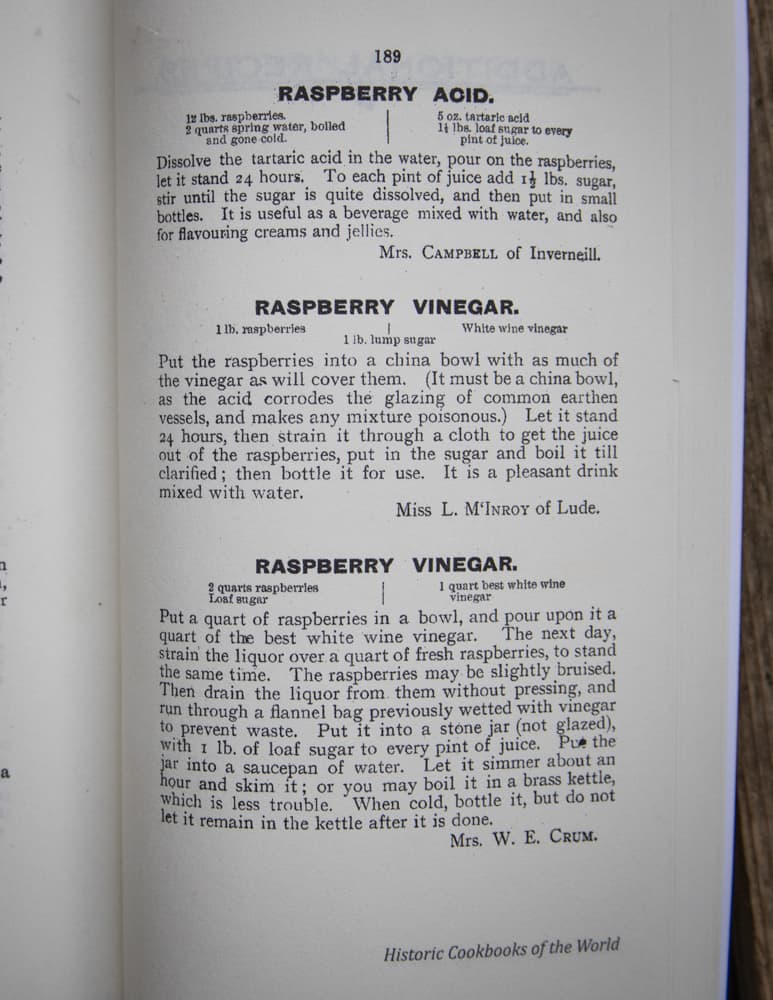
A double infusion
The recipe from the Roux Brothers was simple enough: put some raspberries in vinegar, sweeten in a bit, strain and bottle for use (more or less), but there was a step in there I'd never seen before. After you mix the berries with vinegar and let them sit for a few days, you remove them, and add the same amount of berries again, and repeat the process, creating a double infusion.
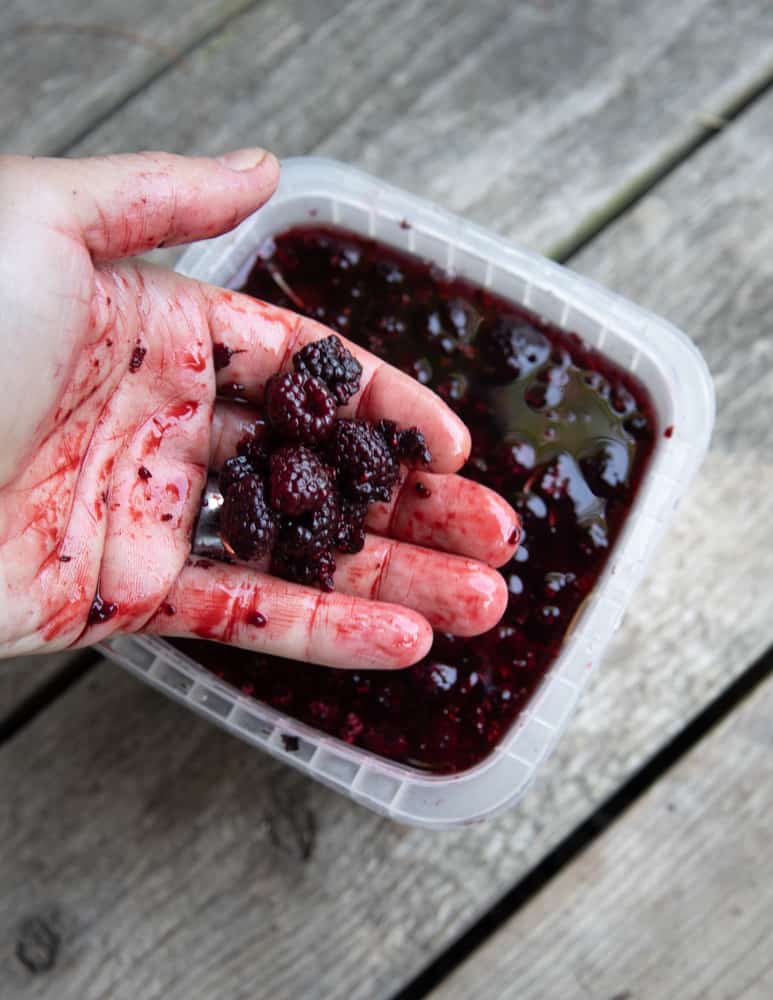
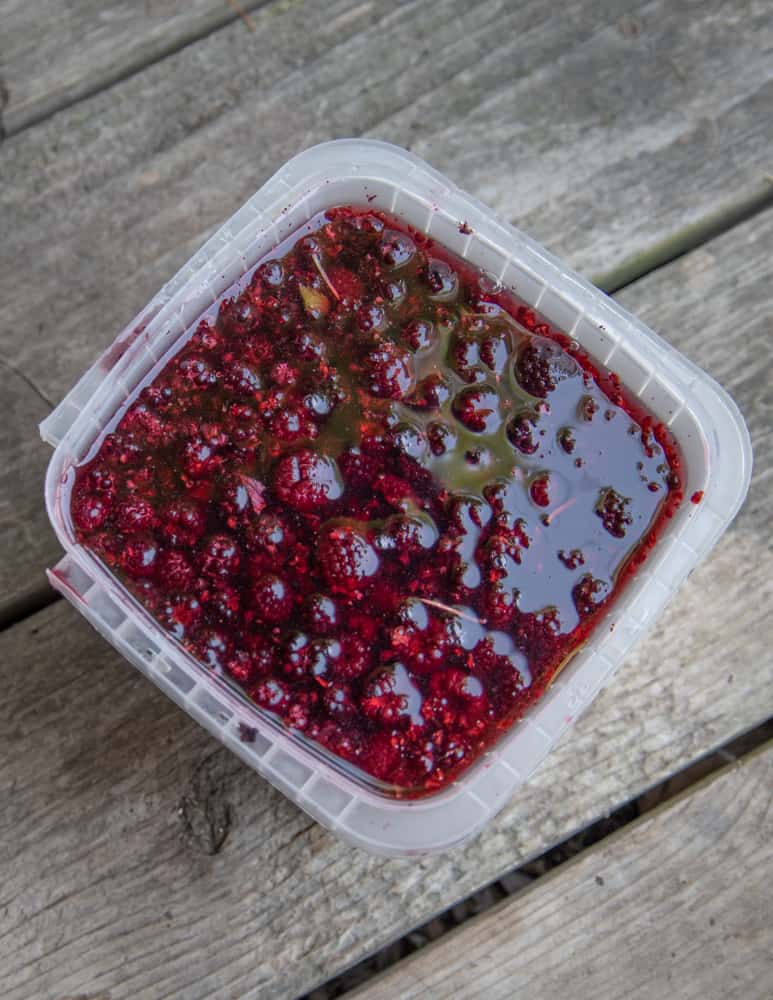
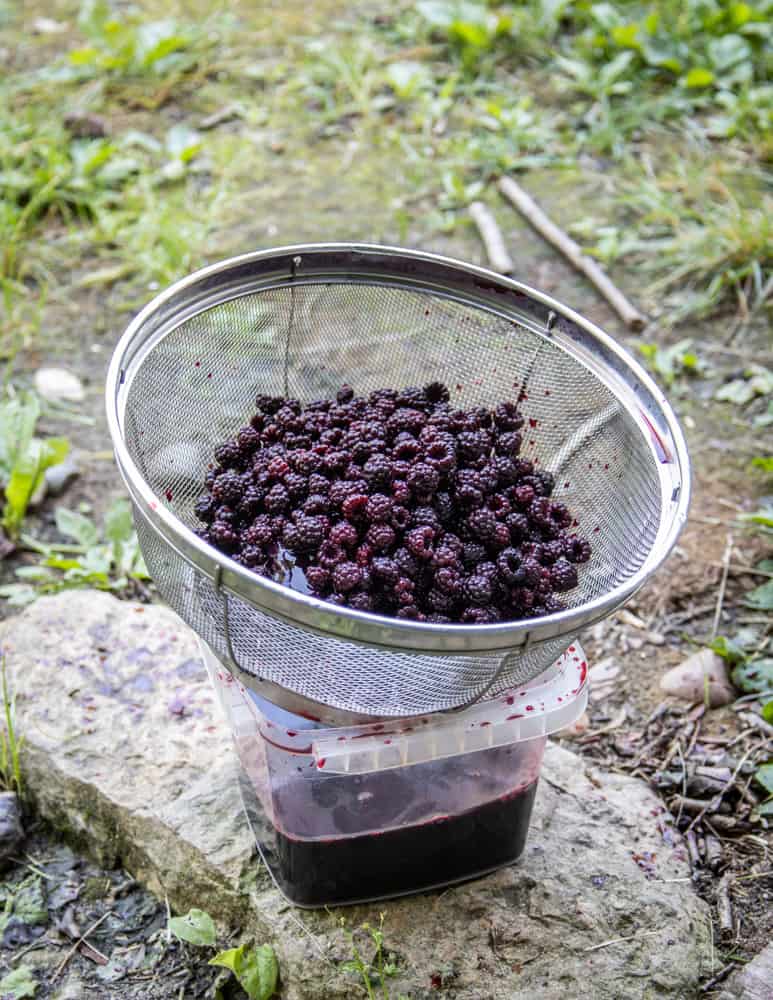
I worked out a version of the recipe, tested it with a few berries, and I can tell you, it makes the most delicious berry-flavored vinegar I've ever tasted, and the salads it makes are beyond the pale, especially with wild greens I use for salads like lambs quarters that benefit from a touch of sweetness.
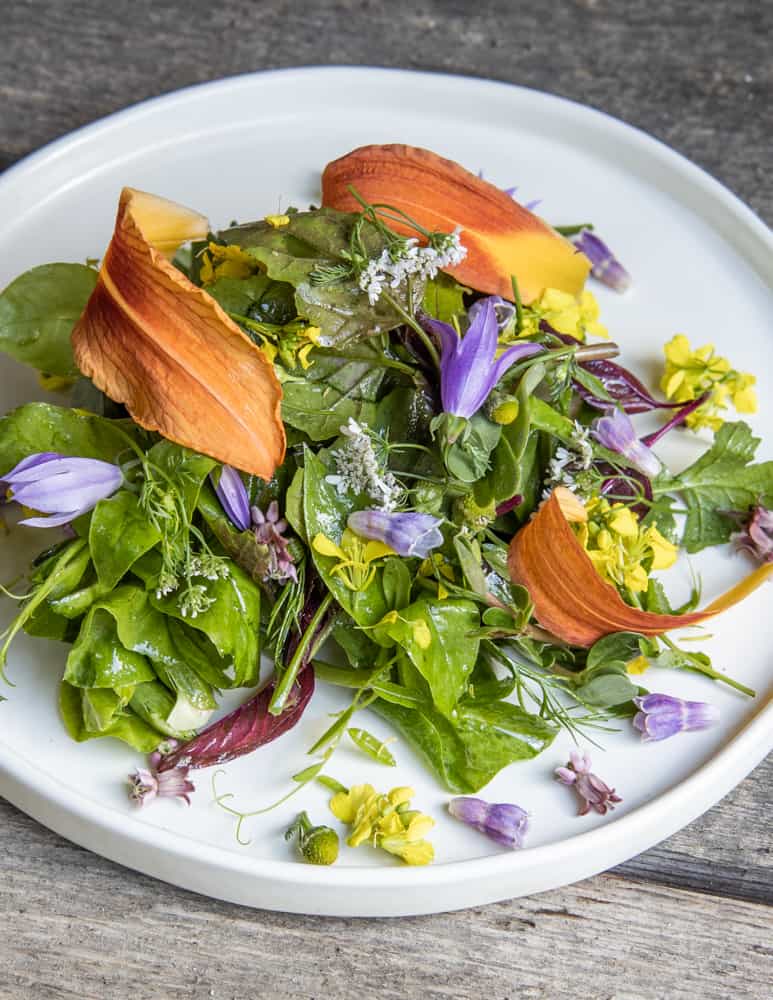
After I was primed to see it, I started seeing the double fruit maceration in other places too. Just recently, I came across another berry vinegar, nearly identical to the first calling for fresh strawberries, and then another two versions of raspberry vinegar. Like many of those old culinary traditions, people did it for a reason, and I think it's safe to say they didn't put quarts of fresh berries into something that sucked.
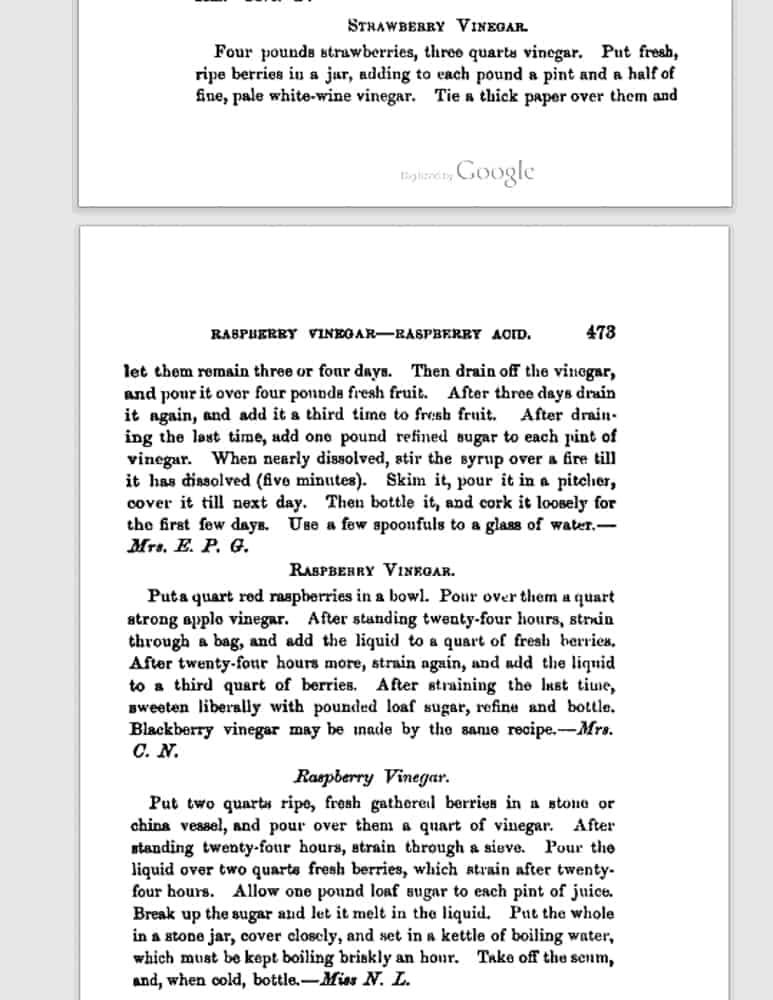
Raspberry Vinegar vs Fermented Raspberry Vinegar
Just for the sake of clarity here, lets go over the difference between fermented and infused vinegars made from the same fruit. There's a trend of fermenting everything and everything (I do plenty of that), so if you read the words "ultimate berry vinegar" and assumed at first you'd be allowing fresh berries to ferment into vinegar you wouldn't be alone.
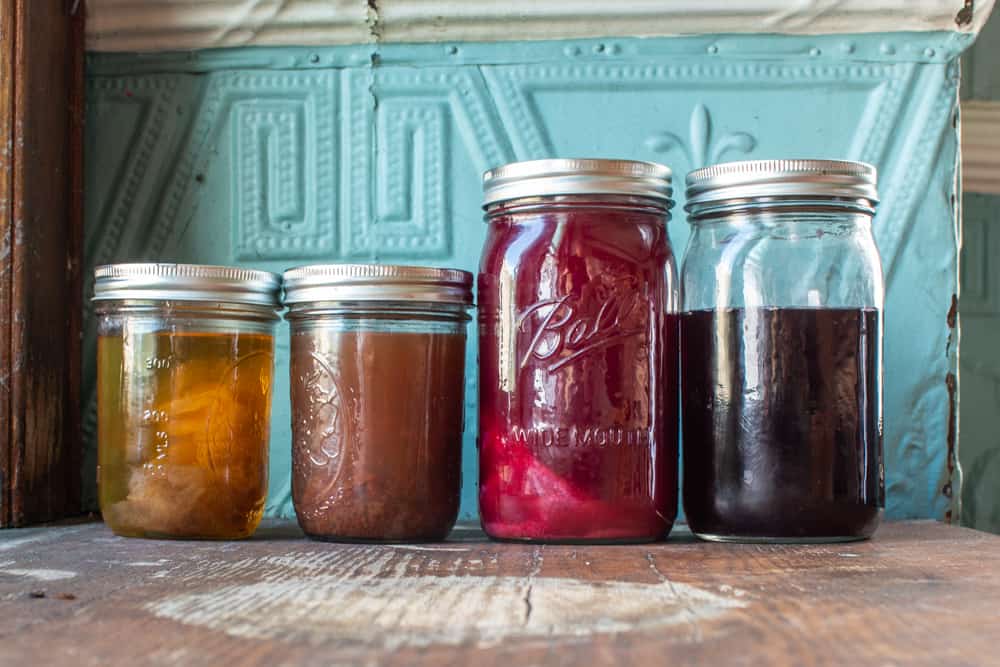
Vinegar made from berries and wild fruits is great (see two methods for fruit scrap vinegar here) but if you've ever done it yourself you'll know that the finished product gives a different taste than the fresh essence of the fruit.
But, a simple infusion and/or reduction keeps the fresh flavor of berries very well, and vinegar seems to amplify the power of the infusion more than something like, say, syrup made with water. Adding alcohol to the mix, as in the Roux Brother's recipe, also helps to draw out flavors and natural juices, a technique Kenji Lopez Alt covers in his book The Food Lab.
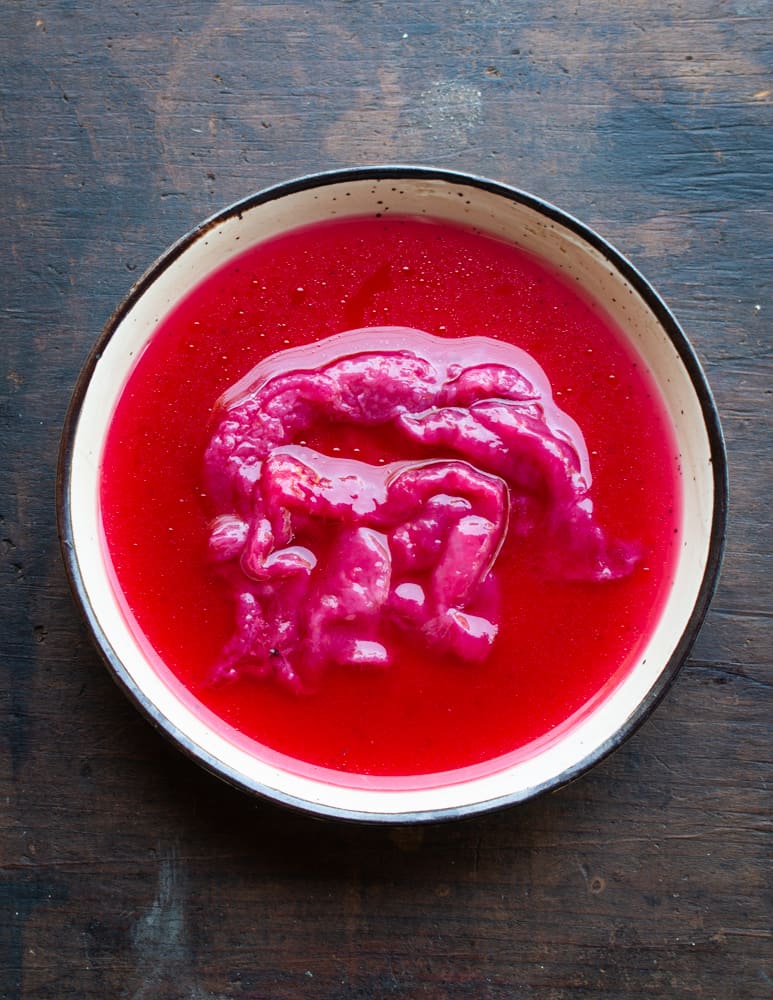
That being said, the ultimate, ultimate berry vinegar is going to be multiple macerations of berries in a vinegar made from the fermented berries themselves as I've noted in the recipe here, but a good white wine vinegar is just fine.
You can also save the berries themselves from the macerations to make into vinegar after the infusion is complete. As I mentioned, blackcap raspberries make one of the best infusions here, but just about any ripe, juicy berry will give you a good result.
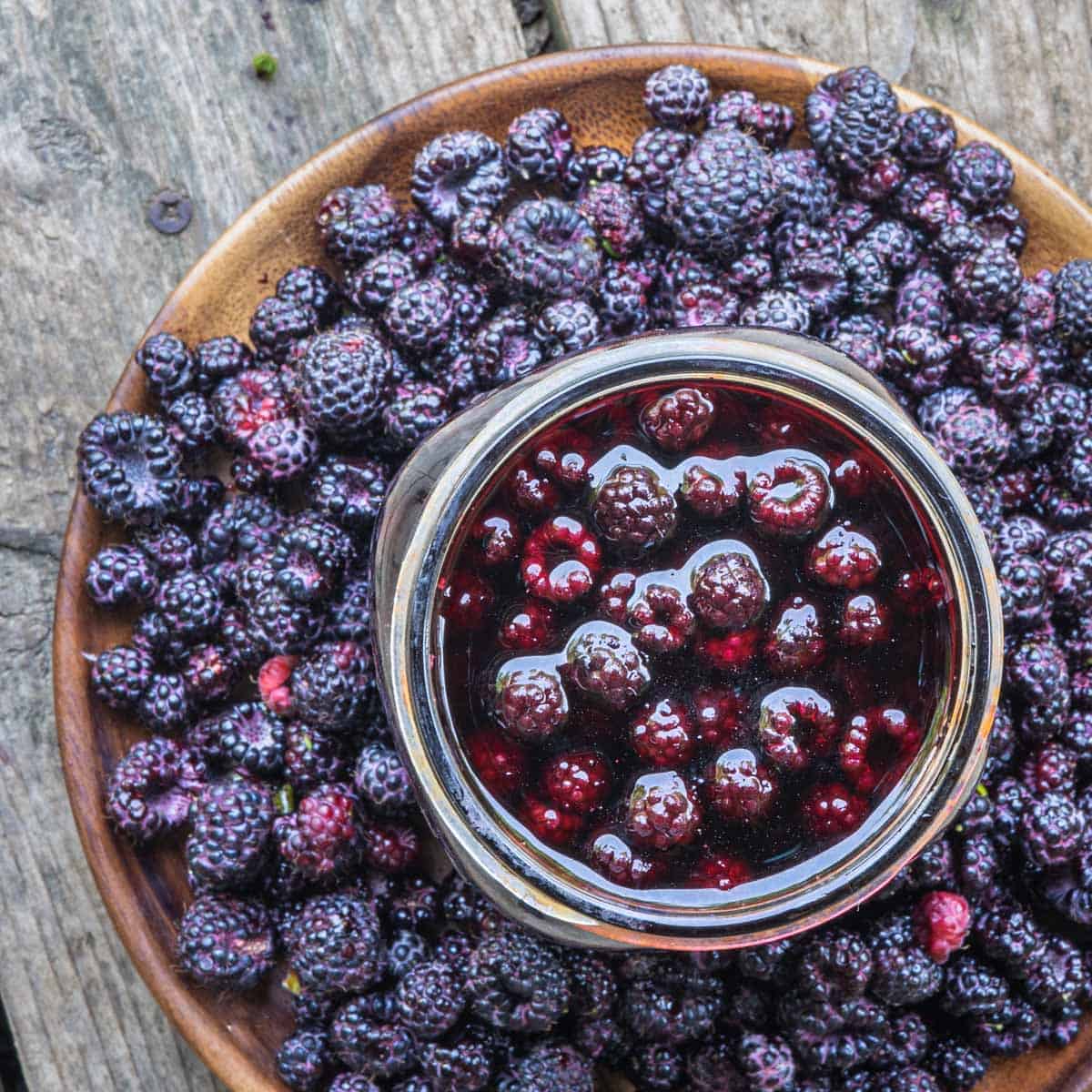
The Ultimate Berry-Infused Vinegar
Equipment
- 1 large bowl or mason jar or a container with a lid that can hold 5-6 cups of liquid.
Ingredients
- ¼ cup cognac or brandy *See note
- 1.5 lbs fresh berries, such as blackcap raspberries, preferably overripe *See note
- 5 tablespoons (75 grams) maple syrup, or a comparable amount of sugar
- 2 cups high quality white wine vinegar
Instructions
The Maceration
- Divide the berries in half. Refrigerate half the berries, then put the rest in a container and cover with the vinegar, maple and cognac or brandy and allow to sit for 48 hours, stirring occasionally and pressing them against the side to help the berries break up a bit.
Second Maceration
- Strain out the berries from the vinegar (saving them for another purpose, like jam or vinegar) then repeat the process with the reserved berries and infused vinegar.
Heating/infusing
- After the second infusion, strain out the second batch of berries and transfer the vinegar to a bowl on top of a simmering pot of water and allow to gently heat for 30 minutes.
Cool and store
- Cool the vinegar to room temperature, then bottle and store. It's excellent used to deglaze pans and make beurre blancs and other sauces, but shines the most used alongside some good tasting oil, especially nut oils like hazelnut or pumpkinseed in a simple dressing.
Using the vinegar to dress a salad
- To dress a salad with the finished vinegar, season salad greens to taste with oil and the vinegar in separate containers (don't mix them, shake in a jar to emulsify, or anything like that) add a pinch of salt, a few cracks of pepper and maybe a couple torn leaves of basil or mint.
- Mix, taste, adjust the seasoning for vinegar, salt and herbs until it tastes good to you, and serve.
Notes
Don't be tempted skip the alcohol here-it serves a purpose. Besides brandy or cognac adding complimentary notes, the alcohol seems to serve a dual purpose of helping to extract the juice of the fruit more than just vinegar alone. Cooking takes the raw edge off the alcohol. Berries This uses a generous amount of fresh berries, but you can probably get away with using half the amount, splitting it in half for the two macerations/infusions.

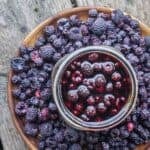
Tamar Amidon
I don't know if you'll see this 4 years later, but I followed to here from your black cap posting. I have a lot of black caps right now, and like how this recipe looks. Do you think my home fermented apple cider vin would work, or would it not be acidic enough, and do you think there would be benefit from using a jam bag?
Alan Bergo
Hey! Your homemade vinegar is fine, apple cider may be slightly more tart, but it’s nothing a little maple syrup can’t fix. A jam bag would allow you to really squeeze all the goodness out.
Tamar Amidon
Get the goodness out without making the juice cloud, the purpose of the jam bag in the first place. I will give it a shot, my acv isnt very tart, but I like it. I don't use it for preserving because I don't have a way to accurately check it's ph
Tamar Amidon
Also, I worked for Todd English when he opened Olives and he was so into vertical food, I don't know why waiters didn't yell. I have no idea how they got plates to tables without things tipping over. However, the worst I heard was a place that served a dessert on one of those white charge plates with the huge rims, where they buttered the rim and thickly dusted it with cocoa. If the server touched it at all while carrying it it would show on both the plate and the server's hands. Absolute nightmare
Alan Bergo
LOL. You know then. I grew up cooking in that era and definitely had my failures. I can see the huge charger plate in my mind, and I can still taste the raspberry dressing from Sysco that was thicker than wallboard paste. Thanks for sharing, made my day. Alfred Portale was kind of the kind of architectural food when I was coming up. I keep a couple of his books around as reminders.
Nancy
I made this a couple summers ago. It’s awesome. I was scrolling through comments, if Peggy or anyone else is still looking, you can get a 5 liter jug of white wine vinegar from Colavita shipped to you for $34.99 plus shipping Colavita.com
Alan Bergo
Thanks Nancy.
Keith L
Thanks chef!
I too am old enough to remember the vat of ”raz vin” from Roland. Horrible stuff but wildly popular at the time. I had relegated raz vin to the dustbin of memory, more like cobwebs. The addition of the maple syrup and brandy is a welcome addition. I was a little more liberal with both. Thanks for jogging the brain cells and the great method.
Alan Bergo
On nice. I never had the pleasure of the Roland stuff. This recipe is so good, can't wait to make a batch this year.
Dylan Nielsen
Hey Alan,
Great stuff! I apologize if I missed something, but do you have any other notes or resources about using the discarded fruit to make a fermented vinegar? I think I'd like to try that but I've never given it a shot. I've read through your fruit scrap vinegar recipe, so mainly just wondering if there are any additional considerations in using discarded fruit. Thanks as always for the great information. Looking forward to starting some nocino and vin de noix in the next few days, and just about ready to process some mugolio I started a couple months ago too - good times to be a grungy Midwesterner!
Cheers man,
Dylan
Alan Bergo
Hi Dylan. You will use the fruit scrap vinegar recipe as written with your discard. Sorry if that wasn’t clear.
MJ Dobratz
I am really tempted to make the black raspberry. BUT Is this really 845 calories & 149 carbs for one tablespoon??!!
Seems impossible.
Alan Bergo
Don't pay attention to that, nutrition info is automatically generated and the program makes A LOT of mistakes. Sometimes they slip by me. I adjusted it to reflect the actual nutritional data of vinegar with the added sweetener.
tom lohse
I love this. So far I have only used it to flavor seltzer water. And if it was a tough day I will add a little vodka. Looking forward to trying other uses.
Peggy
What brand can you recommend for a good quality white wine vinegar. I would have to order it since i live in southern NM.
Thanks
Alan Bergo
You can use white vinegar in a pinch. Beaufort is the brand of vinegar I use but it's a chef brand, most store-bought versions are fine.
Dan
Does the finished product need to be refrigerated after bottling?
Alan Bergo
No, it is completely shelf stable.
Dan
Awesome! We just finished bottling our version with raspberries this afternoon, and can't wait to try it with a meal. It is so unbelievably delicious by itself I am sure it will be amazing! Thank you very much for the recipe!
Doug
Berry Nice.
Alan Bergo
I approve this dad joke.
Sylvie
Hi Alan, may I ask for a clarification: do you press on the berries to extract add'l liquid? I am assuming no, but wanted to confirm. I can totally see how the acidified berries could be used for a chutney. And here, of course,I use honey as a sweetener since I have lots of it. It's been an exceptional year for berries and honey!
Alan Bergo
Sylvie, you could, but it isn't necessary.
Amy
“Unfortunately the entire fruit chapter was cut.”
This has to be one of the saddest sentences I have ever read.
Alan Bergo
Trust me I know. They cut 25 k words and over 100 recipes. Good news is there will be an entire book on fruit down the road.
Sylvie
well, Alan. THAT is god news!!!!!
Keith
I'm working with elderberries and elderflowers to hopefully develop commercial products. I'm trying to make elderberry balsamic with grape must and naturally fermented elderberry vinegar. The problem is the vinegar is either thick enough but too sweet or balanced but too thin. Adding additional juice at the end may just work. Thanks for the idea! FYI pectinase, a natural enzyme, can be added to the fruit to extract more fruit flavor and juice when making fermented fruit vinegars. Also, an aquarium bubbler can be used with silicone tubing and a stainless steel straw to speed the fermentation. The aeration can speed the process from months to a couple of weeks.
Alan Bergo
Great stuff there Keith. Thank you. If you ever get the elderberry vinegar off the ground let me know and I can help you move it.
Keith
Alan- that would be awesome. I'm making your raspberry vinegar now. It's taking a good chunk of what's left of my foraged black raspberries I'm really interested to see how the combination of vinegar/cognac balances the maple syrup. Hoping what I learn will help keep my vinegars from tasting like bad Chinese restaurant sweet-sour sauce.
Keith
Alan- See above. Last your you said you'd help sell some elderberry vinegar if I got it going. I've got my first bottling (elderberry/elderflower vinegar and balsamic) and have several local places wanting to sell it. So I'm more concerned about running out of stock than needing help selling it. but I would love to get your opinion on the quality. Can I send you some samples to evaluate?
bill from lachine
Alan, Thanks for the recipe and just in time. Coming down to the final pickings of our blackcap raspberries and I'll also hit a patch of wild ones tomorrow. Looking forward to give this one a shot!
Chris
Alan, could we substitute Everclear for cognac or brandy?
Alan Bergo
I wouldn't but you could thin it out to the same ABV.
Don
Looks excellent. I missed the raspberry season here in PA but will try it with blackberries.
Also, looking forward to trying your green walnut syrup. Have you ever tried it with hickory nuts? I'm going to try one of each.
Alan Bergo
Thanks Don, yes, this is really, really good with just about any juicy rubus or similar fruit. I haven't tried the walnut honey with hickory nuts-I smelled some green bitternut hickory yesterday for kicks and their citrus aroma wasn't anything like a green black walnut, I'd probably stick to black walnuts or butternuts for it but that's just me.
Sylvie
Hi Don, here in the Northern Virginia Piedmont, we have 2 raspberry seasons: early summer (basically June) when we have red raspberries and black caps (and some purple and golden) and then again late summer/early fall (late August, September, sometimes into October) for red and gold. It should be the same for you... only need to find the right berry farm! I bet this could also be done with frozen raspberries (not store-bought, but ones that you froze yourself)
Alan Bergo
Sylvie, fun to know. We have a dual raspberry season here too with the everbearing kind. Nice to pick them after the heat of summer breaks.
Stephen Brill
Thanks for posting this article and the recipe, which I assume can be used for many fruits. I have found a couple of good spots for wild plums (Prunus Americana) near my home in Cottage Grove, MN, and may use some for plum vinegar instead of the usual plum jam.
Steve
Alan Bergo
Thanks Steve, yes, many fruits can be used here, preferably juicy overripe berries.